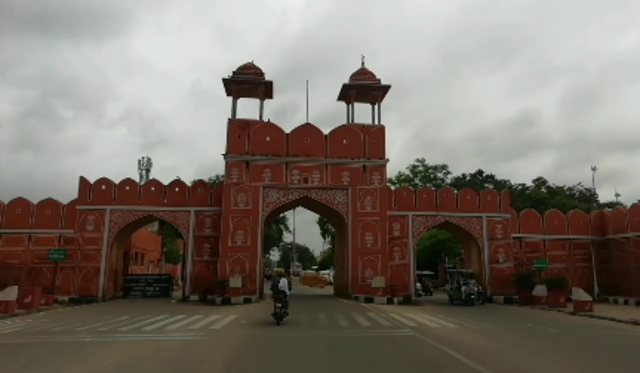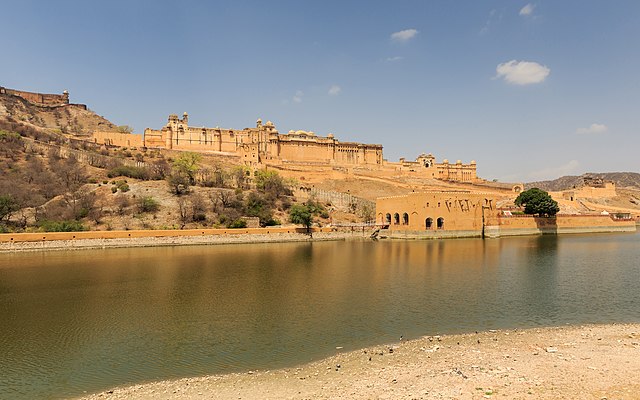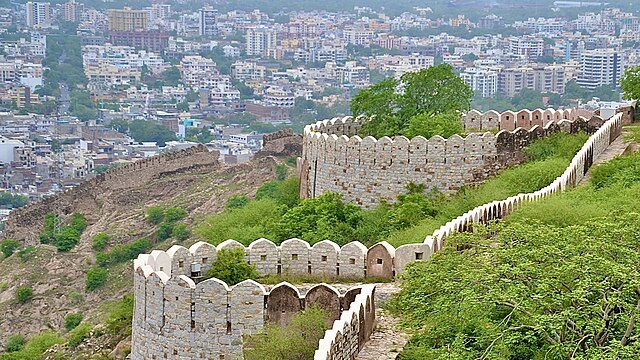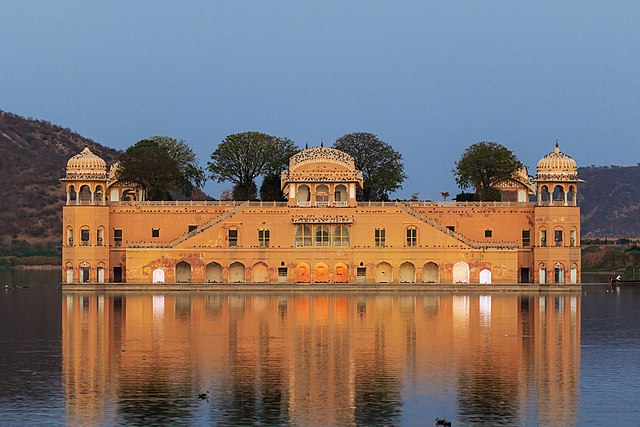Have you ever dreamed of stepping into a city where history whispers through every alley, and colors dance in the streets? Welcome to Jaipur, India’s Pink City, a place where royal heritage meets modern vibrancy. Nestled in the heart of Rajasthan, Jaipur is a kaleidoscope of culture, architecture, and flavors that captivates every traveler. Whether you’re a history buff, a foodie, or just someone chasing Instagram-worthy moments, Jaipur has something for you. Let’s dive into this enchanting city and uncover its treasures, one story at a time.
Why Is Jaipur Called the Pink City?
Picture this: it’s 1876, and the Prince of Wales is visiting Jaipur. To roll out the royal welcome mat, Maharaja Ram Singh II decided to paint the entire city pink, a color symbolizing hospitality in Indian culture. The old city’s buildings, from shops to homes, got a rosy makeover, and the nickname “Pink City” stuck. Today, as you wander through the walled city, the pinkish-terracotta facades still glow under the sun, giving Jaipur a charm that’s hard to resist. Isn’t it amazing how a single gesture of welcome became a city’s identity?
The Historical Roots of Jaipur
Jaipur wasn’t just built on a whim. Founded in 1727 by Maharaja Sawai Jai Singh II, it was one of India’s first planned cities. The king, a lover of astronomy and architecture, designed Jaipur with precision, blending Vastu Shastra principles with scientific urban planning. Wide streets, grid-like layouts, and majestic gates make the city a marvel of 18th-century ingenuity. Walking through Jaipur feels like flipping through a history book, with every corner telling tales of Rajput valor and vision.
Top Attractions in Jaipur You Can’t Miss

Jaipur’s attractions are like jewels in a crown—each one dazzling in its own way. From towering forts to intricate palaces, here’s a rundown of the must-visit spots that make this city unforgettable.
Amber Fort: A Glimpse of Royal Grandeur
Perched on a hill overlooking Maota Lake, Amber Fort (or Amer Fort) is a masterpiece of Rajput and Mughal architecture. As you climb the cobbled path or ride an elephant to its gates, the fort’s honey-colored walls seem to glow. Inside, the Sheesh Mahal (Mirror Palace) sparkles with thousands of tiny mirrors, reflecting light like a starry night. Can you imagine the opulence of the royals who once lived here? Pro tip: Visit early to beat the crowds and catch the sunrise casting a golden hue over the fort.
Hawa Mahal: The Palace of Winds
If Jaipur had a postcard, Hawa Mahal would be on it. This five-story palace, built in 1799, looks like a honeycomb with its 953 lattice windows (jharokhas). Designed to let royal women observe street festivals without being seen, it’s a blend of beauty and function. The breeze flowing through the windows keeps it cool, earning its name, “Palace of Winds.” Stand in front and snap a photo, but don’t skip going inside to see the delicate stained-glass work. It’s like stepping into a jewel box!
City Palace: Where Royalty Still Lives
Smack in the heart of Jaipur, the City Palace is a sprawling complex of courtyards, museums, and royal residences. Part of it is still home to the Jaipur royal family, giving it a living, breathing vibe. The Chandra Mahal and Mubarak Mahal showcase exquisite artifacts, from royal costumes to ancient weapons. Don’t miss the Pritam Niwas Chowk, with its four colorful doors representing the seasons. It’s a photographer’s paradise and a history lover’s dream.
Jantar Mantar: A Stargazer’s Delight
Ever seen a giant sundial that actually works? Jantar Mantar, a UNESCO World Heritage Site, is an astronomical observatory built by Jai Singh II. Its massive stone instruments, like the Samrat Yantra, measure time and track celestial bodies with eerie precision. It’s like a playground for science nerds, but even if you’re not into astronomy, the quirky shapes and open-air setting make it a fun stop. Guided tours help decode the magic of this 18th-century marvel.
Exploring Jaipur’s Vibrant Markets
Jaipur’s bazaars are a riot of colors, scents, and sounds. If shopping is your cardio, you’re in for a treat. These markets aren’t just about buying stuff—they’re about soaking in the city’s soul.
Johari Bazaar: The Jewel Hub
Looking for a sparkly souvenir? Johari Bazaar is Jaipur’s go-to for jewelry. From Kundan to Meenakari work, the shops here dazzle with intricate designs. Even if you’re just window-shopping, the craftsmanship will leave you in awe. Bargaining is key, so channel your inner negotiator and score a deal. Oh, and don’t forget to sip some roadside chai while you’re at it—it’s part of the experience.
Bapu Bazaar: A Textile Treasure Trove
Bapu Bazaar is where fabric dreams come true. Think vibrant bandhani sarees, block-printed kurtas, and quirky jootis (traditional footwear). The narrow lanes buzz with vendors calling out their wares, and the colors pop like a Holi festival. Whether you’re buying a scarf or a full outfit, the quality and variety here are unmatched. Pro tip: Check for authentic Rajasthani prints to take home a piece of Jaipur’s culture.
Jaipur’s Food Scene: A Feast for the Senses

Jaipur’s cuisine is as bold as its architecture. Rajasthani food is hearty, spicy, and full of character, and the Pink City serves it up with flair. Ready to tantalize your taste buds?
Must-Try Dishes in Jaipur
Dal Baati Churma is the rockstar of Rajasthani cuisine—lentil curry paired with baked wheat balls and sweet crumbled churma. It’s comfort food on steroids. Then there’s Laal Maas, a fiery mutton curry that’ll make your eyes water (in a good way). For snacks, grab some Pyaaz Kachori or Mirchi Vada from a street stall. And don’t leave without trying Ghevar, a syrup-soaked dessert that’s pure indulgence. Food in Jaipur isn’t just a meal; it’s a celebration.
Where to Eat in Jaipur
For an authentic Rajasthani thali, head to Chokhi Dhani, a cultural village that pairs food with folk performances. Laxmi Mishthan Bhandar (LMB) in Johari Bazaar is a legend for sweets and snacks. If you want a royal dining experience, Suvarna Mahal at Rambagh Palace serves gourmet Rajasthani dishes in a palatial setting. Street food lovers, hit up Masala Chowk for a smorgasbord of local delicacies. Wherever you eat, Jaipur’s flavors will linger long after your trip.
Culture and Festivals: Jaipur’s Beating Heart
Jaipur’s culture is like a vibrant tapestry, woven with traditions, music, and dance. The city’s festivals are a window into its soul, drawing locals and tourists alike into the revelry.
Jaipur Literature Festival: A Global Gathering
Every January, the Jaipur Literature Festival (JLF) turns the city into a haven for book lovers. Writers, poets, and thinkers from around the world converge at Diggi Palace, sparking conversations that range from profound to playful. It’s not just about books—there’s music, food, and a festive vibe that makes JLF a bucket-list event. Ever wondered what it’s like to hear your favorite author speak while sipping chai? JLF makes it happen.
Teej and Diwali: Celebrations Galore
Jaipur shines brightest during festivals. Teej, celebrated in monsoon, sees women in colorful lehengas swinging on decorated jhoolas (swings) and praying for marital bliss. Diwali, the festival of lights, transforms the city into a twinkling wonderland, with markets buzzing and homes glowing with diyas. Visiting during a festival? You’ll feel like you’ve stepped into a Bollywood movie, with joy and color everywhere.
Practical Travel Tips for Jaipur
Planning a trip to Jaipur? Here’s the lowdown to make your visit smooth and unforgettable.
Best Time to Visit
Jaipur is at its best from October to March, when the weather is cool and perfect for sightseeing. Summers (April-June) can be scorching, so pack light and stay hydrated if you visit then. Monsoon (July-September) brings lush greenery but also humidity. Winter is peak season, so book hotels early to snag a good deal.
Getting Around Jaipur
Jaipur is easy to navigate. Auto-rickshaws and cabs are plentiful, but for a local vibe, try a cycle rickshaw in the old city. Apps like Uber and Ola work well for hassle-free rides. If you’re exploring nearby forts, consider renting a car with a driver—it’s affordable and convenient. And don’t be shy to haggle with rickshaw drivers; it’s part of the Jaipur experience!
Where to Stay
Jaipur has options for every budget. For luxury, check into heritage hotels like Rambagh Palace or Samode Haveli, where you’ll feel like royalty. Mid-range travelers can opt for boutique stays like Pearl Palace or Hotel Arya Niwas. Budget backpackers, head to Zostel or Moustache Hostel for clean, vibrant dorms. Wherever you stay, Jaipur’s hospitality will make you feel at home.
Day Trips from Jaipur
Got extra time? Jaipur is a gateway to some incredible nearby destinations. Rent a car or join a tour to explore these gems.
Pushkar: The Spiritual Escape
About 150 km from Jaipur, Pushkar is a sacred town centered around a serene lake. It’s home to the rare Brahma Temple and a hippie vibe that draws backpackers. The Pushkar Camel Fair (November) is a spectacle of livestock trading, folk performances, and quirky contests. It’s like stepping into a different world, where spirituality and festivity collide.
Ajmer: A Blend of Faith and History
Just next to Pushkar, Ajmer is famous for the Dargah of Khwaja Moinuddin Chishti, a revered Sufi shrine. The city’s Ana Sagar Lake and Adhai Din Ka Jhonpra mosque add historical charm. Ajmer’s peaceful aura makes it a perfect contrast to Jaipur’s hustle, ideal for a day of reflection.
Jaipur’s Modern Side: Beyond the Forts

Jaipur isn’t stuck in the past. The city has a trendy side, with cafes, malls, and art spaces popping up. Head to Cafe Lazy Mojo for a quirky coffee break or visit Amrapali Museum for contemporary jewelry exhibits. World Trade Park is great for modern shopping, while art hubs like Jawahar Kala Kendra showcase Rajasthan’s creative pulse. It’s proof that Jaipur blends its roots with a cool, contemporary edge.
Why Jaipur Steals Your Heart
Jaipur is more than a checklist of attractions—it’s a city that wraps you in its warmth and stories, and colors. From the grandeur of Amber Fort to the chaos of Johari Bazaar, every moment feels like an adventure. The food lingers on your palate, the markets tempt your wallet, and the people’s smiles stay in your memory. Whether it’s your first trip or your tenth, Jaipur has a way of making you fall in love, over and over again. So, when are you packing your bags for the Pink City?
FAQs About Jaipur
1. What is the best way to reach Jaipur?
Jaipur is well-connected by air, rail, and road. Fly into Jaipur International Airport, take a train to Jaipur Junction, or drive via NH-48 from Delhi (about 5-6 hours). Buses from nearby cities are cheap and frequent.
2. How many days are enough for Jaipur?
A 3-4 day trip covers major attractions like Amber Fort, Hawa Mahal, and City Palace, plus markets and food. Add a day for a side trip to Pushkar or Ajmer.
3. Is Jaipur safe for solo travelers?
Yes, Jaipur is generally safe for solo travelers, including women. Stick to well-lit areas at night, avoid isolated spots, and use trusted transport like Uber. Locals are friendly and helpful.
4. What should I buy in Jaipur?
Pick up jewelry (Kundan, Meenakari), textiles (bandhani, block prints), handicrafts, and blue pottery. Johari Bazaar and Bapu Bazaar are top spots for authentic buys.
5. What is the best time for festivals in Jaipur?
Winter (October-March) hosts major festivals like Diwali and the Jaipur Literature Festival (January). Teej (July-August) is vibrant during monsoon. Check festival dates before planning.

